Indian Navy News & Discussion - 12 April 2021
-
Prem Kumar
- BRF Oldie
- Posts: 4670
- Joined: 31 Mar 2009 00:10
Re: Indian Navy News & Discussion - 12 April 2021
This is an excellent Atmanirbharta initiative!A Sharma wrote: ↑10 Jul 2025 08:46 Indian Navy's submarine kill power soars as ERASR anti-submarine rocket clears user trials
A few next steps to consider:
1) The latest Russian version has a homing-depth-charge. We should look to emulate it, to make these "smarter".
2) Create a variation for torpedo hard-kill. Re-purposing RBU-6000 against torpedoes could be mighty effective because torpedoes don't have strong self-defence mechanisms. So either a saturation attack using depth-charges or using smart-charges would effectively hard kill torpedoes at a 10 Km range.
3) Create a lightweight version of SMART for ranges between 10 Km to say 100 Km - to hunt for submarines in the vicinity. Of course, this would need VLS cells.
Re: Indian Navy News & Discussion - 12 April 2021
Much more details on ERASR
How ERASR revolutionizes India's anti-submarine warfare
https://english.mathrubhumi.com/feature ... t-wqx2auqy
Previously, the Indian Navy used anti-submarine rockets that could reach targets up to 5.3 kilometres away. While that was helpful for close combat, it gave little time to react if a submarine was detected farther off.
The ERASR has now increased that strike range to around 8.5 kilometres -- nearly 60 percent more. That means the Navy can detect and destroy a threat much earlier and from a safer distance.
The rocket also brings important improvements in technology. Unlike the older systems, which used a single-stage motor, ERASR comes with a two-stage solid propulsion system that allows it to cover both short and long distances effectively.
ERASR also features a special Electronic Time Fuse developed in India. This fuse ensures that the rocket explodes at exactly the right time, close to the enemy submarine, increasing its chances of destroying the target.
How ERASR revolutionizes India's anti-submarine warfare
https://english.mathrubhumi.com/feature ... t-wqx2auqy
Previously, the Indian Navy used anti-submarine rockets that could reach targets up to 5.3 kilometres away. While that was helpful for close combat, it gave little time to react if a submarine was detected farther off.
The ERASR has now increased that strike range to around 8.5 kilometres -- nearly 60 percent more. That means the Navy can detect and destroy a threat much earlier and from a safer distance.
The rocket also brings important improvements in technology. Unlike the older systems, which used a single-stage motor, ERASR comes with a two-stage solid propulsion system that allows it to cover both short and long distances effectively.
ERASR also features a special Electronic Time Fuse developed in India. This fuse ensures that the rocket explodes at exactly the right time, close to the enemy submarine, increasing its chances of destroying the target.
Re: Indian Navy News & Discussion - 12 April 2021
Onboard INS Arnala: India's next generation anti-submarine warship
With China on one side, home to the world’s largest navy with dozens of submarines, and Pakistan expanding its own submarine fleet, India is ramping up its anti-submarine warfare capabilities. As part of this effort, the Indian Navy has commissioned its next-generation anti-submarine warfare ship, INS Arnala. This is the first vessel under a major defence programme worth over ₹12,500 crore, which will see 15 more warships built at Indian shipyards. The BBC’s Jugal Purohit and Midhat Ullah Hasani were granted rare access to the ship at the Naval Dockyard in Visakhapatnam, on India’s east coast, where they spoke with members of its crew.
Nistar - A Legacy Reincarnated
Nistar – A Timeless Journey. From her commissioning in 1971 as India’s first submarine rescue vessel to her reincarnation as a state-of-the-art platform — Nistar is a living legacy. Watch the story of Nistar — then and now. Commissioning on 18 July 2025.
Final Stealth Frigate INS Mahendragiri to boost Navy’s edge in Indian Ocean with advanced firepower
INS Mahendragiri, the final stealth frigate under Project 17A, will be delivered to the Indian Navy by Feb 2026, according to Mazagon Dock Shipbuilders Limited (MDL). This delivery marks a major step in India’s push for self-reliance in defence manufacturing. The vessel is being built using advanced integrated construction techniques and is equipped with cutting-edge stealth capabilities. Designed for multi-dimensional warfare, it features BrahMos-class surface-to-surface missiles, surface-to-air weaponry, and anti-submarine systems. Project Executive Jay Varghese highlighted the frigate’s indigenous rocket launchers and combat systems, enhancing India’s naval strength across all domains. Notably, 75% of the ship's equipment is indigenously sourced, showcasing the progress of the ‘Aatmanirbhar Bharat’ initiative. INS Mahendragiri exemplifies India's growing expertise in designing and building high-tech warships using domestic technology and talent.
With China on one side, home to the world’s largest navy with dozens of submarines, and Pakistan expanding its own submarine fleet, India is ramping up its anti-submarine warfare capabilities. As part of this effort, the Indian Navy has commissioned its next-generation anti-submarine warfare ship, INS Arnala. This is the first vessel under a major defence programme worth over ₹12,500 crore, which will see 15 more warships built at Indian shipyards. The BBC’s Jugal Purohit and Midhat Ullah Hasani were granted rare access to the ship at the Naval Dockyard in Visakhapatnam, on India’s east coast, where they spoke with members of its crew.
Nistar - A Legacy Reincarnated
Nistar – A Timeless Journey. From her commissioning in 1971 as India’s first submarine rescue vessel to her reincarnation as a state-of-the-art platform — Nistar is a living legacy. Watch the story of Nistar — then and now. Commissioning on 18 July 2025.
Final Stealth Frigate INS Mahendragiri to boost Navy’s edge in Indian Ocean with advanced firepower
INS Mahendragiri, the final stealth frigate under Project 17A, will be delivered to the Indian Navy by Feb 2026, according to Mazagon Dock Shipbuilders Limited (MDL). This delivery marks a major step in India’s push for self-reliance in defence manufacturing. The vessel is being built using advanced integrated construction techniques and is equipped with cutting-edge stealth capabilities. Designed for multi-dimensional warfare, it features BrahMos-class surface-to-surface missiles, surface-to-air weaponry, and anti-submarine systems. Project Executive Jay Varghese highlighted the frigate’s indigenous rocket launchers and combat systems, enhancing India’s naval strength across all domains. Notably, 75% of the ship's equipment is indigenously sourced, showcasing the progress of the ‘Aatmanirbhar Bharat’ initiative. INS Mahendragiri exemplifies India's growing expertise in designing and building high-tech warships using domestic technology and talent.
Re: Indian Navy News & Discussion - 12 April 2021
Live, as I type. A discussion with Vice Admiral Shekhar Sinha. A lot of nuggets.
Why Indian Navy Cannot Be Stopped by China or Pakistan
Why Indian Navy Cannot Be Stopped by China or Pakistan
Re: Indian Navy News & Discussion - 12 April 2021
I am a huge fan of the Navy and how far the Indian Navy has advanced with Submarines, ships, aircraft carriers and more. Listening to Vice Admiral Shekhar Sinha is a treat and urge all navy enthusiasts to listen to the above video, a lot to be learnt about IN and the people who serve. Super good indeed.
One nugget that Shekhar Sinha saab said that in Op Sindoor, the Indian army took down 7 terror camps and 2 were taken down by Airforce (and he hinted not from Air). wow.
He also mentions about India's nuclear doctrine of no first use, but the second strike will completely wipe the opposing nation like Pak. Initially Pak threatened to use tactical weapons against India, hoping for no 2nd strike, but India was very clear that 2nd strike will be devastating no matter the kind of nuke used on India, its ships, or IN at sea. The IN from long range location unknown will spearhead the 2nd strike.
One nugget that Shekhar Sinha saab said that in Op Sindoor, the Indian army took down 7 terror camps and 2 were taken down by Airforce (and he hinted not from Air). wow.
He also mentions about India's nuclear doctrine of no first use, but the second strike will completely wipe the opposing nation like Pak. Initially Pak threatened to use tactical weapons against India, hoping for no 2nd strike, but India was very clear that 2nd strike will be devastating no matter the kind of nuke used on India, its ships, or IN at sea. The IN from long range location unknown will spearhead the 2nd strike.
Re: Indian Navy News & Discussion - 12 April 2021
Italian firm eyes local tie-ups as Navy set to open bids for torpedo deal
https://economictimes.indiatimes.com/ne ... 785970.cms
19 July 2025
https://economictimes.indiatimes.com/ne ... 785970.cms
19 July 2025
An Italian firm may soon supply heavy weight torpedoes to the Indian Navy. The company is competing with a French group for a contract. The Italian firm is also seeking Indian partners. They are considering establishing local production facilities. This is to fulfill potential export demands. The Navy needs 48 torpedoes initially. The total requirement is over 200.
-
Prem Kumar
- BRF Oldie
- Posts: 4670
- Joined: 31 Mar 2009 00:10
Re: Indian Navy News & Discussion - 12 April 2021
When Varnunastra is available and inductions begun + the MoD signed a $100M agreement with Naval Group to integrate the Takshak into the Kalvari subs, why are we still in the market for heavyweight torpedoes?
Are our torps not quite cutting edge yet?
Are our torps not quite cutting edge yet?
Re: Indian Navy News & Discussion - 12 April 2021
The Black Shark torpedo was the original weapon of choice for the Kalvari Class submarine. But she never got this armament, due to the AW101 scandal. This torpedo is made by WASS (Whitehead Alenia Sistemi Subacquei) of Italy, whose parent company is Leonardo (formerly Finmeccanica). This company also owns Agusta Westland, which makes the AW101 helicopter. So when the AW101 scandal happened, MoD - as per procedure - blacklisted Leonardo and this resulted in the Scorpene Class having no torpedo.Prem Kumar wrote: ↑22 Jul 2025 09:45 When Varnunastra is available and inductions begun + the MoD signed a $100M agreement with Naval Group to integrate the Takshak into the Kalvari subs, why are we still in the market for heavyweight torpedoes?
Are our torps not quite cutting edge yet?
Naval HQ thus had to resort to using the old SUT-64 torpedo from the HDW 209, Type 1500 (Shishumar) Class boats. This is not an ideal situation, as a torpedo is a submarine's main weapon and the Indian Navy is operating a state of the art submarine, albeit with an old torpedo.
When Leonardo was finally removed from blacklist - via the MoD - Naval HQ re-initiated for the acquisition of a new generation torpedo. Thus the contest we now have. This acquisition is very old (nearly two decades) and was for 98 torpedoes. Both the Black Shark from WASS and F-21 from Naval Group are very capable torpedoes and would be formidable in the Kalvari Class boats. Germany was also in the contest (with the DM2A4, which the Pakistan Navy uses in their Agosta Class boats), but exited the contest. The rumour mill is that the Black Shark is leading the contest, as the F-21 is priced higher.
While all this was going, DRDO was working on a Varunastra derivative i.e. the Takshak. The Varanustra itself was fired from a Sindhughosh Class vessel, but she is too big apparently to fit inside Western-origin boats i.e. HDW 209, Type 1500 and Scorpene. Thus the Takshak was born. So yes, Naval Group has been paid to integrate Takshak into Kalvari Class. I suspect the Navy is looking at two types of heavy weight torpedoes, as the submarine fleet is only set to grow with the following;
* Six P-75 Kalvari Class boats
* Three P-75AS (Advanced Scorpene) boats
* Six P-75I (HDW 214 derivative) boats
* Six P-76 boats
* Arihant Class SSBN
* S5 Class SSBN
* Project 77 Class SSN
The final requirement is for 200 torpedoes of foreign origin, with (I suspect) an equal number of torpedoes of Indian origin. By acquiring two types of Heavy Weight Torpedoes, Naval HQ is hedging their bets. For obvious natsec reasons, expect the last three in the above list to feature only Indian torpedoes. The first four in the list will use a mixture of foreign and Indian torpedoes. This is good operational flexibility for a boat commander. Gives him tactical options, as both types will operate differently.
Re: Indian Navy News & Discussion - 12 April 2021
https://x.com/ReviewVayu/status/1948270974358749456 ---> Naval Group and Mazagon Dock Shipbuilders Ltd (MDL) extending their cooperation to support the integration of DRDO's indigenous energy system into Kalvari Class submarines. Under this agreement, the submarines will undergo a complex process known as “Jumboisation,” involving precision cutting of the hull, safe insertion of the plug, and re-joining of the structure to have a fully operational and safe submarine. As the original equipment manufacturer (OEM) of the Scorpène submarines, Naval Group will provide technical oversight, proprietary materials and specialised training to experienced Indian engineers of MDL to ensure seamless integration.
https://x.com/AjayshreeSamby3/status/19 ... 8828715245 ---> Naval Group and Mazagon Dock Ltd (MDL) have extended their collaboration for the integration of indigenous propulsion system, developed by @DRDO_India, onboard the Scorpene submarines.
https://x.com/DefenceDecode/status/1948282252867326202 ---> Naval Group and Mazagon Dock Shipbuilders Ltd. (MDL) have extended their strategic partnership to integrate DRDO-developed indigenous propulsion systems onboard the P75 Kalvari-class (Scorpène) submarines. This involves:
Precision Hull Modification
– Cutting open the pressure hull of the submarine
– Safely inserting a specially designed AIP plug section
– Re-joining and welding with high-precision tolerances
OEM Oversight & Support
Naval Group, the French OEM of Scorpène submarines, will provide:
– Technical oversight
– Proprietary materials & tools
– Specialised training to Indian engineers of MDL
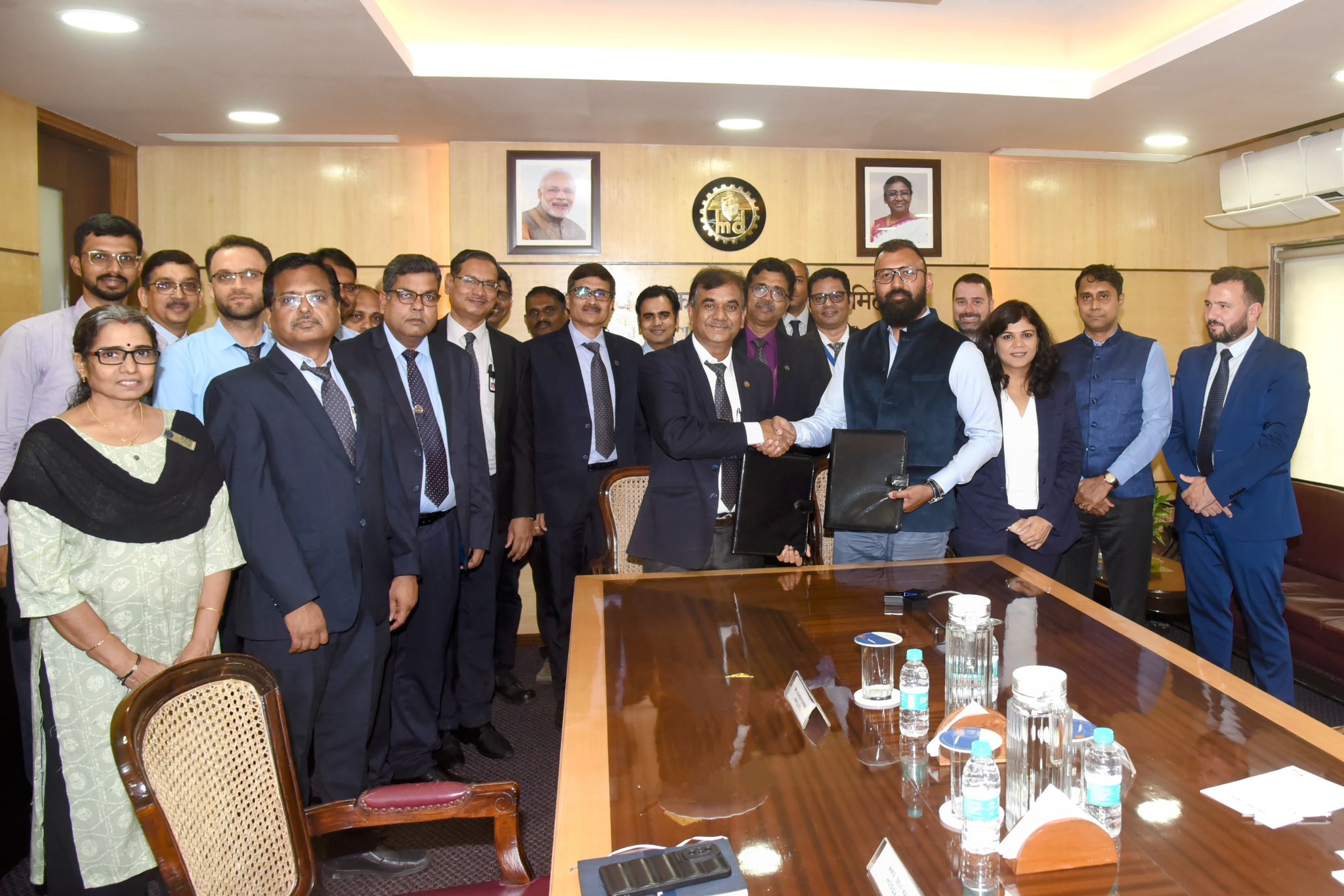
https://x.com/AjayshreeSamby3/status/19 ... 8828715245 ---> Naval Group and Mazagon Dock Ltd (MDL) have extended their collaboration for the integration of indigenous propulsion system, developed by @DRDO_India, onboard the Scorpene submarines.
https://x.com/DefenceDecode/status/1948282252867326202 ---> Naval Group and Mazagon Dock Shipbuilders Ltd. (MDL) have extended their strategic partnership to integrate DRDO-developed indigenous propulsion systems onboard the P75 Kalvari-class (Scorpène) submarines. This involves:
Precision Hull Modification
– Cutting open the pressure hull of the submarine
– Safely inserting a specially designed AIP plug section
– Re-joining and welding with high-precision tolerances
OEM Oversight & Support
Naval Group, the French OEM of Scorpène submarines, will provide:
– Technical oversight
– Proprietary materials & tools
– Specialised training to Indian engineers of MDL

Re: Indian Navy News & Discussion - 12 April 2021
Lots of interesting new details in the article below...
Top-of-the-line torpedoes for Navy's Kalvari-class subs soon? Why it's a close race ahead
https://www.indiatoday.in/india-today-i ... 2025-07-29
29 July 2025
The defence ministry is beginning cost negotiations for purchase of 48 torpedoes. The contenders: France's Naval Group and Italy's Whitehead Alenia Sistemi Subacquei.
• Indian Navy to start cost talks for 48 heavyweight torpedoes for Kalvari Class submarines
• Two bidders remain: France’s Naval Group and Italy’s WASS
• Navy plans over 200 torpedoes under Make in India scheme
Re: Indian Navy News & Discussion - 12 April 2021
Jumboisation Of Kalvari Class Submarines Set To Make Fleet DeadlierRakesh wrote: ↑24 Jul 2025 19:24 https://x.com/ReviewVayu/status/1948270974358749456 ---> Naval Group and Mazagon Dock Shipbuilders Ltd (MDL) extending their cooperation to support the integration of DRDO's indigenous energy system into Kalvari Class submarines. Under this agreement, the submarines will undergo a complex process known as “Jumboisation,” involving precision cutting of the hull, safe insertion of the plug, and re-joining of the structure to have a fully operational and safe submarine. As the original equipment manufacturer (OEM) of the Scorpène submarines, Naval Group will provide technical oversight, proprietary materials and specialised training to experienced Indian engineers of MDL to ensure seamless integration.
France’s Naval Group and India’s MDL have partnered to integrate DRDO’s indigenous energy system into Kalvari-class submarines, enhancing endurance through a complex “Jumboisation” upgrade. Naval Group will support MDL with technical oversight and training. This fusion of domestic innovation with foreign expertise reflects India’s push for defence self-reliance under Atmanirbhar Bharat. The move strengthens Indo-French ties and showcases MDL’s evolution into a premier warship builder, further bolstering India's underwater warfare capabilities.
Re: Indian Navy News & Discussion - 12 April 2021
The Himgiri is part of a seven build frigate program (Nilgiri Class) for the Indian Navy. The first vessel in the class - INS Nilgiri - was commissioned into the Indian Navy on 15 January 2025. The Himgiri is one of three vessels being built @ GRSE. The other three vessels are being built at MDL, just as in the case of INS Nilgiri. Commissioning of the Himgiri is planned for August 2025.
https://x.com/livefist/status/1950870007413649562 ---> JUST IN: P-17A guided missile frigate Himgiri delivered to Indian Navy. It's the first of 3 being built by @OfficialGRSE.
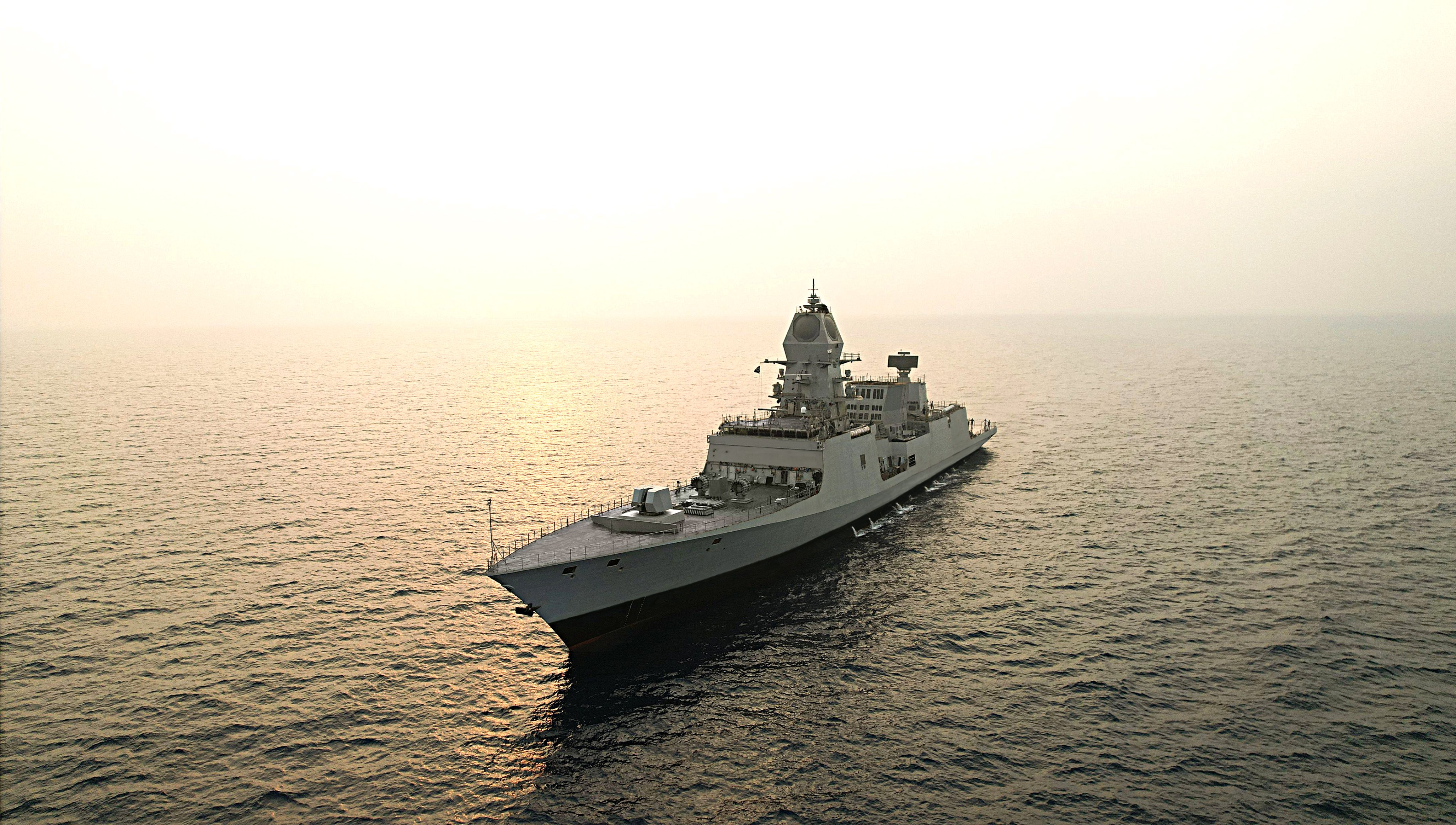
https://x.com/shreedharsingh9/status/19 ... 1742134365 ---> Advanced stealth frigate HIMGIRI delivered by GRSE Kolkata.

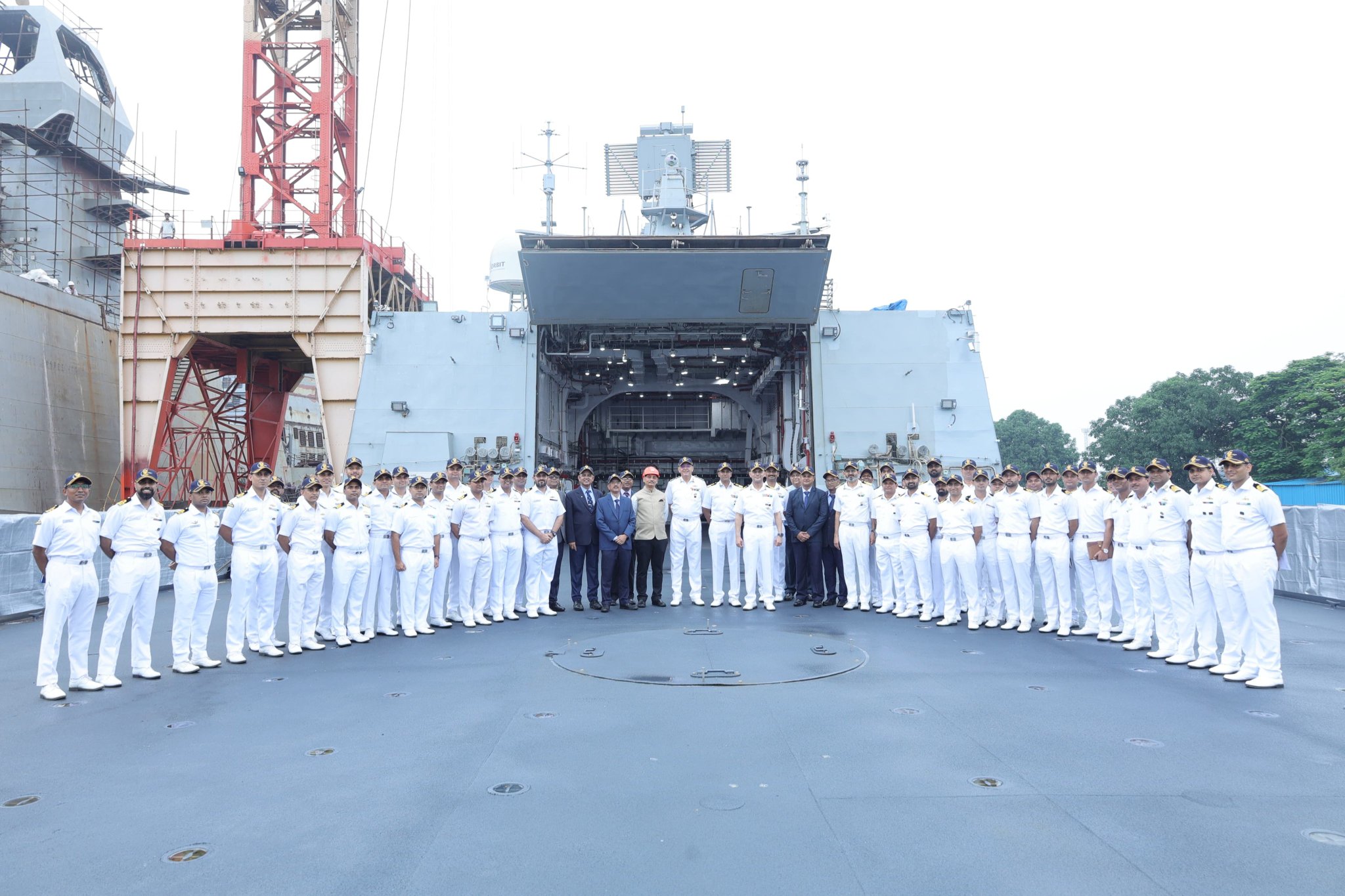
https://x.com/delhidefence/status/1950876389785338332 ---> GRSE Delivers its 801st Vessel—‘Himgiri’, an Advanced P17A Guided-Missile Frigate to Indian Navy today. The first of three being built by GRSE under the Indian Navy’s Project 17A, while four frigates of the same class are built by Mazagon Docks.

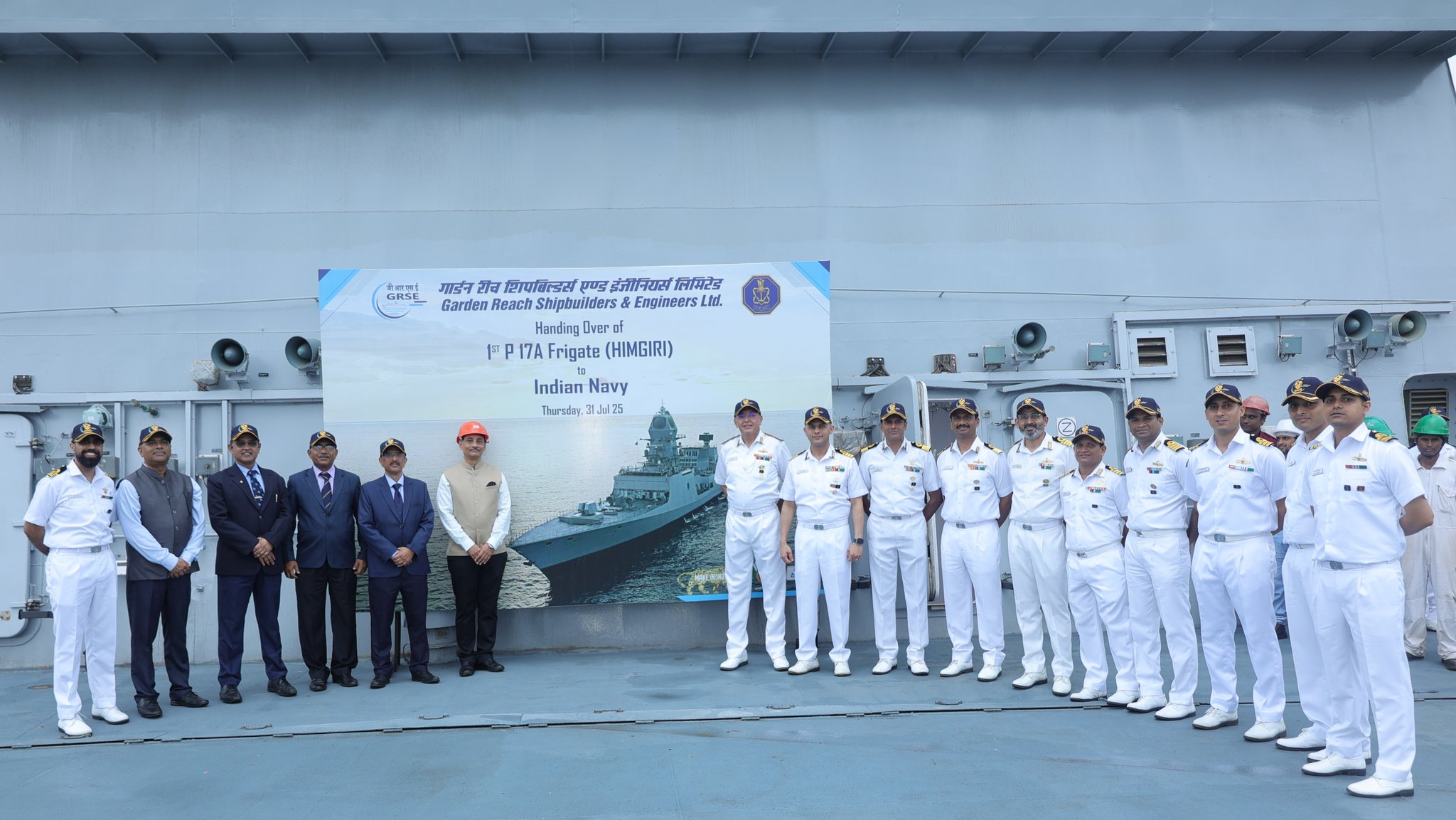
https://x.com/livefist/status/1950870007413649562 ---> JUST IN: P-17A guided missile frigate Himgiri delivered to Indian Navy. It's the first of 3 being built by @OfficialGRSE.

https://x.com/shreedharsingh9/status/19 ... 1742134365 ---> Advanced stealth frigate HIMGIRI delivered by GRSE Kolkata.


https://x.com/delhidefence/status/1950876389785338332 ---> GRSE Delivers its 801st Vessel—‘Himgiri’, an Advanced P17A Guided-Missile Frigate to Indian Navy today. The first of three being built by GRSE under the Indian Navy’s Project 17A, while four frigates of the same class are built by Mazagon Docks.


Re: Indian Navy News & Discussion - 12 April 2021
Delay hits Scorpene retrofit to boost stealth, endurance - Rajat Pandit, ET
India has once again missed the boat to enhance the underwater operational endurance and stealth of its latest Scorpene or Kalvari-class conventional submarines, with the already delayed air independent propulsion (AIP) system developed by DRDO still not ready for integration with the vessels.
The first Scorpene submarine to be built at the Mazagon Docks (MDL) with French collaboration, INS Kalvari, which was commissioned in Dec 2017, will now complete her ongoing maintenance refit at the Mumbai naval dockyard without being retrofitted with the AIP plug as was originally planned, defence ministry sources told TOI.
"The fuel cell-based AIP system developed by DRDO's Naval Materials Research Lab, which has L&T as the prime industry partner, is still not yet operationally available. Hopefully, it should be ready by the time the second Scorpene (INS Khanderi) comes for her scheduled normal maintenance refit in mid-2026," a source said.
The Navy after a long delay has inducted six diesel-electric Scorpene submarines, constructed by MDL in collaboration with the French Naval Group under Project-75 for over Rs 23,000 crore, with the sixth INS Vagsheer being commissioned in Jan this year.
There is major concern about the continuing delay in the indigenous AIP project, which was originally slated for completion by June 2017 after being sanctioned in 2014 at an initial cost of Rs 270 crore.
Amid the delay, MDL and Naval Group signed an agreement for the integration of the indigenous AIP energy system plugs on the Scorpenes only on July 23. Under it, each submarine will undergo a complex project called "jumboisation", involving precision cutting of the hull, safe insertion of the AIP plug and then rejoining the structure to ensure the vessel is fully operational again.
Unlike nuclear-powered submarines, which have unlimited underwater endurance, diesel-electric boats must surface or snorkel every couple of days to get oxygen to recharge their batteries. Those fitted with AIP, however, can stay submerged for around two weeks to significantly boost their stealth and combat capabilities.
With Pakistan on course to induct eight Yuan or Hangor-class conventional submarines with AIP from China in a major capability jump, India's depleting conventional underwater combat arm has become a major worry. China, of course, now has the world's largest navy, which includes over 50 diesel-electric and 10 nuclear submarines.
Apart from the six French-origin Scorpenes, India has seven very old Russian Kilo-class and four German HDW diesel-electric submarines at present. It also has two operational SSBNs (nuclear-powered submarines armed with nuclear ballistic missiles) in INS Arihant and INS Arighaat, with the third to be commissioned as INS Aridhaman this year, as reported by TOI earlier.
The long-pending projects to build three additional Scorpenes for Rs 38,000 crore and six new-generation diesel-electric submarines, with both AIP and land-attack cruise missiles, for Rs 70,000 crore under Project-75-India at MDL, are also yet to be finalised and inked.
Re: Indian Navy News & Discussion - 12 April 2021
So the order is placed only for 2. So those 2 can be on any submarine of the class.
DRDO and L&T team up to develop AIP for Indian Navy Submarines
https://www.larsentoubro.com/pressrelea ... dian-navy/
06 June 2023
Larsen & Toubro and DRDO signed a contract for realisation of two Air Independent Propulsion (AIP) System Modules for Kalvari Class of Submarines of the Indian Navy. The contract documents were exchanged between Shri Arun T Ramchandani, Executive Vice President and Head-L&T Defence and Shri. PT Rojatkar, Director - Naval Materials Research Laboratory (NMRL) in the presence of Shri J D Patil, Member of Executive Committee of Management and Advisor (Defence & Smart Technologies) to CEO & MD Larsen & Toubro Limited & Senior officials from NMRL and L&T.
These Modules constitute the core of the fuel cell based AIP System, indigenously developed by Naval Materials Research Laboratory (NMRL) of DRDO with L&T as prime industry partner, an association spanning more than a decade. The Energy Modules (EMs) comprising Fuel Cells produce the required power, along with on-board Hydrogen generation. The technology of this indigenous AIP system is a unique one that generates hydrogen on demand thereby obviating the need for carrying hydrogen onboard which is a major safety concern for a submarine. On realisation and integration of these modules in the submarines, India will join an elite club of a handful of nations who have indigenously developed fuel cell based submarine AIP technology which is critical for increasing the endurance of conventional submarines. It is pertinent to mention here that principally this technology is a green one since the by-product of the reaction is non-polluted water which can be released into the oceans.
Commenting on the development, Shri Arun Ramchandani said, “We are proud to be the longest serving development partner to DRDO across programs in multiple domains. L&T is privileged to be associated with accomplishing the dream of realising an indigenous AIP system and mark India‘s joining a select group of few nations who have developed the requisite technology . Our commitment to nation-building continues to be as strong as ever and establishes yet another milestone in our journey to fulfil India’s aspirations to become Atmanirbhar in critical technologies”
L&T is the recipient of Transfer of Technology (ToT) for this DRDO developed AIP System. The Transfer of Technology documents for the same were handed over to Mr Patil by the Hon’ble Raksha Mantri Shri Rajnath Singh in presence of Chief of Defence Staff and Navy Chief during Aero India 2021 In Bangalore. The manufacturing, integration and factory acceptance trials of the EMs will be undertaken in L&T’s AM Naik Heavy Engineering Complex at Surat. State-of-the-art infrastructure, best practices at L&T and cutting-edge technology will ensure requisite quality and on-time delivery. The EMs will be supplied for integration into the AIP Plug that will be retrofitted into the submarine. This project would pave the way for order(s) for AIP Systems for the remaining five Kalvari Class submarines in the coming years. This could also open up possible export opportunities to other countries that operate Scorpene class submarines.
DRDO and L&T team up to develop AIP for Indian Navy Submarines
https://www.larsentoubro.com/pressrelea ... dian-navy/
06 June 2023
Larsen & Toubro and DRDO signed a contract for realisation of two Air Independent Propulsion (AIP) System Modules for Kalvari Class of Submarines of the Indian Navy. The contract documents were exchanged between Shri Arun T Ramchandani, Executive Vice President and Head-L&T Defence and Shri. PT Rojatkar, Director - Naval Materials Research Laboratory (NMRL) in the presence of Shri J D Patil, Member of Executive Committee of Management and Advisor (Defence & Smart Technologies) to CEO & MD Larsen & Toubro Limited & Senior officials from NMRL and L&T.
These Modules constitute the core of the fuel cell based AIP System, indigenously developed by Naval Materials Research Laboratory (NMRL) of DRDO with L&T as prime industry partner, an association spanning more than a decade. The Energy Modules (EMs) comprising Fuel Cells produce the required power, along with on-board Hydrogen generation. The technology of this indigenous AIP system is a unique one that generates hydrogen on demand thereby obviating the need for carrying hydrogen onboard which is a major safety concern for a submarine. On realisation and integration of these modules in the submarines, India will join an elite club of a handful of nations who have indigenously developed fuel cell based submarine AIP technology which is critical for increasing the endurance of conventional submarines. It is pertinent to mention here that principally this technology is a green one since the by-product of the reaction is non-polluted water which can be released into the oceans.
Commenting on the development, Shri Arun Ramchandani said, “We are proud to be the longest serving development partner to DRDO across programs in multiple domains. L&T is privileged to be associated with accomplishing the dream of realising an indigenous AIP system and mark India‘s joining a select group of few nations who have developed the requisite technology . Our commitment to nation-building continues to be as strong as ever and establishes yet another milestone in our journey to fulfil India’s aspirations to become Atmanirbhar in critical technologies”
L&T is the recipient of Transfer of Technology (ToT) for this DRDO developed AIP System. The Transfer of Technology documents for the same were handed over to Mr Patil by the Hon’ble Raksha Mantri Shri Rajnath Singh in presence of Chief of Defence Staff and Navy Chief during Aero India 2021 In Bangalore. The manufacturing, integration and factory acceptance trials of the EMs will be undertaken in L&T’s AM Naik Heavy Engineering Complex at Surat. State-of-the-art infrastructure, best practices at L&T and cutting-edge technology will ensure requisite quality and on-time delivery. The EMs will be supplied for integration into the AIP Plug that will be retrofitted into the submarine. This project would pave the way for order(s) for AIP Systems for the remaining five Kalvari Class submarines in the coming years. This could also open up possible export opportunities to other countries that operate Scorpene class submarines.
Re: Indian Navy News & Discussion - 12 April 2021
Post-Op Sindoor, IAF, Navy to place mega orders for BrahMos supersonic cruise missiles
https://aninews.in/news/national/post-o ... 805133743/
05 August 2025
https://aninews.in/news/national/post-o ... 805133743/
05 August 2025
Re: Indian Navy News & Discussion - 12 April 2021
Soviet-Era Sub INS Sindhukirti Rejoins Navy
https://www.deccanchronicle.com/nation/ ... vy-1895395
03 August 2025



https://www.deccanchronicle.com/nation/ ... vy-1895395
03 August 2025
https://x.com/CMD_HSL/status/1951914467589275709 ---> Sindhukirti our Kirti. As you depart from Hindustan Shipyard Limited, we bid you a heartfelt farewell, dear Sindhukirti. Your time with HSL has been marked by dedication, engineering excellence, and silent strength beneath the waves. We salute the crew and the HSL team behind your readiness, and the legacy you carry back into Naval service. May you stay Ops, your divings safe & your missions striking. Goodbye and Godspeed! Jai Hind!Oldest operational submarine undergoes refit.



Re: Indian Navy News & Discussion - 12 April 2021
INS Himgiri | INS Udaygiri | Indian Navy’s BrahMos, Barak Equipped Warships
Two warships. One historic moment. India commissions INS Himgiri and INS Udaygiri, into the Navy’s Eastern Command. With enhanced endurance, modern weapon systems, and entirely indigenous design, these ships mark a strategic leap in naval readiness. And NDTV’s CTRL ALT DEFENCE duo Vishnu Som and Shiv Aroor are aboard the latest Navy vessel, bringing you SUPER exclusive footage and conversations with the two commanding officers - Commodore Vikas Sood of INS Udaygiri and Captain Robin Chakravorty of INS Himgiri. This is the first time two frontline warships, constructed by two different shipyards, are being commissioned together. With INS Nilgiri, the lead P17A of the class entering service in January, and her two sister ships Udaygiri and Himgiri entering service today, it's a landmark bonanza for the Navy - three warships of a type entering service the same year and that too within months of each other.
Two warships. One historic moment. India commissions INS Himgiri and INS Udaygiri, into the Navy’s Eastern Command. With enhanced endurance, modern weapon systems, and entirely indigenous design, these ships mark a strategic leap in naval readiness. And NDTV’s CTRL ALT DEFENCE duo Vishnu Som and Shiv Aroor are aboard the latest Navy vessel, bringing you SUPER exclusive footage and conversations with the two commanding officers - Commodore Vikas Sood of INS Udaygiri and Captain Robin Chakravorty of INS Himgiri. This is the first time two frontline warships, constructed by two different shipyards, are being commissioned together. With INS Nilgiri, the lead P17A of the class entering service in January, and her two sister ships Udaygiri and Himgiri entering service today, it's a landmark bonanza for the Navy - three warships of a type entering service the same year and that too within months of each other.
Re: Indian Navy News & Discussion - 12 April 2021
https://x.com/sidhant/status/1963549568802447775 ---> Singapore acknowledges with appreciation India’s interest in the Malacca Straits Patrol: India, Singapore joint statement.
https://x.com/sidhant/status/1963555443294552296 ---> India has been asking for patrols in Strait of Malacca along with Indonesia, Singapore & Malaysia given it is a 'contiguous state' due to Andeman islands: MEA officials.
https://x.com/sidhant/status/1963557175093080381 ---> India wants to Patrol the Malacca Straits along with Singapore, Indonesia & Malaysia. Singapore has extended its support.
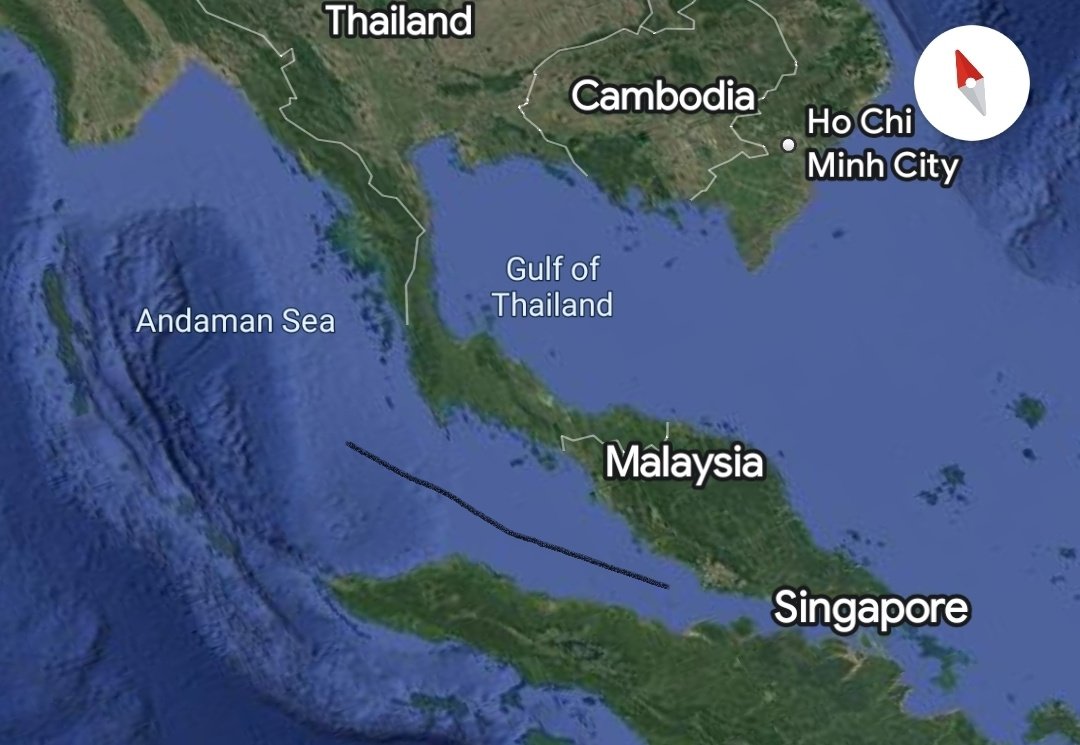
https://x.com/sidhant/status/1963555443294552296 ---> India has been asking for patrols in Strait of Malacca along with Indonesia, Singapore & Malaysia given it is a 'contiguous state' due to Andeman islands: MEA officials.
https://x.com/sidhant/status/1963557175093080381 ---> India wants to Patrol the Malacca Straits along with Singapore, Indonesia & Malaysia. Singapore has extended its support.

Re: Indian Navy News & Discussion - 12 April 2021
https://x.com/adisowraii/status/1963559322094379087 ---> This is what was needed. Not that QUAD giri…Rakesh wrote: ↑04 Sep 2025 18:36 https://x.com/sidhant/status/1963549568802447775 ---> Singapore acknowledges with appreciation India’s interest in the Malacca Straits Patrol: India, Singapore joint statement.
https://x.com/sidhant/status/1963555443294552296 ---> India has been asking for patrols in Strait of Malacca along with Indonesia, Singapore & Malaysia given it is a 'contiguous state' due to Andeman islands: MEA officials.
https://x.com/sidhant/status/1963557175093080381 ---> India wants to Patrol the Malacca Straits along with Singapore, Indonesia & Malaysia. Singapore has extended its support.
Re: Indian Navy News & Discussion - 12 April 2021
If there can be an RIC, why can't there be a JIA/JAI (Japan India Australia)
Re: Indian Navy News & Discussion - 12 April 2021
Navy gets first Tata-made Spanish 3D surveillance radar for its warships, 19 more to come
https://theprint.in/defence/navy-gets-f ... e/2741114/
11 Sept 2025
https://theprint.in/defence/navy-gets-f ... e/2741114/
11 Sept 2025
It is one of the most advanced long-range air defence and anti-missile radars. It has been acquired under an about USD 145-million deal signed in 2020.
Re: Indian Navy News & Discussion - 12 April 2021
Indian Navy to strength its Maritime Domain Awareness capability with commissioning of INS Aravali at Gurugram
https://www.pib.gov.in/PressReleasePage ... ID=2165772
11 Sept 2025
https://x.com/indiannavy/status/1966139945820848387 ---> Indian Navy to commission Naval Base INS Aravali, at Gurugram, in the presence of Admiral Dinesh K Tripathi, CNS on 12 Sept 25. Aravali will support various information & communication centres of the Navy which are key to India’s and Indian Navy’s command, control and Maritime Domain Awareness (MDA) framework.
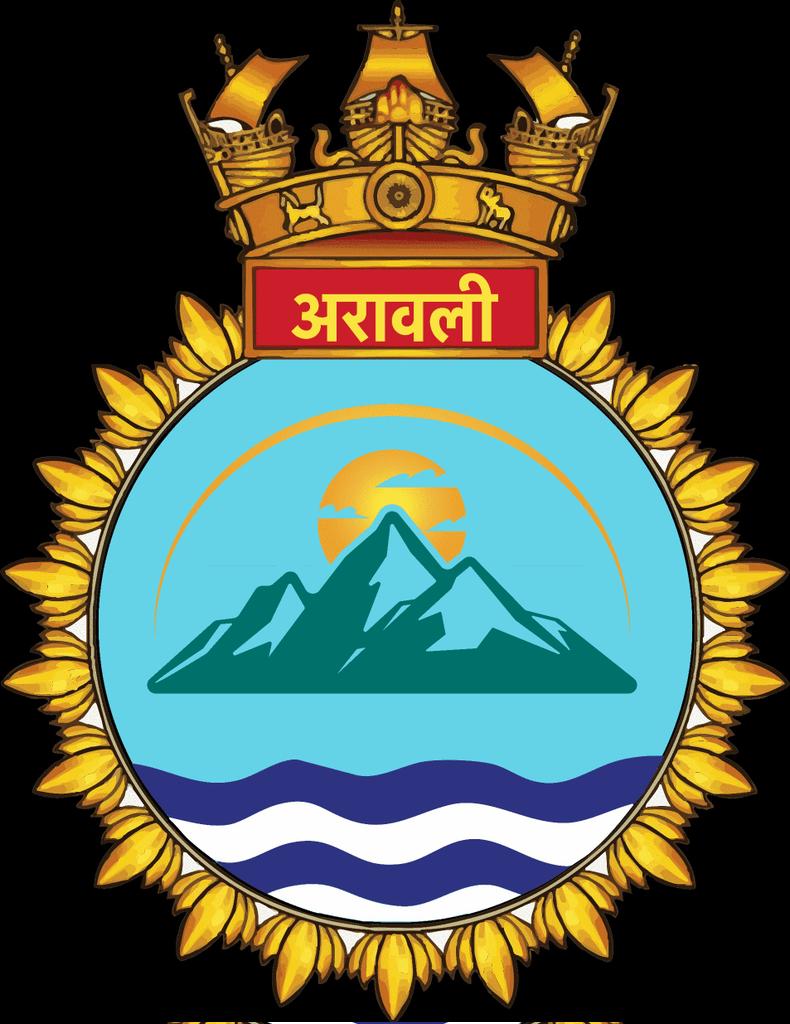
https://www.pib.gov.in/PressReleasePage ... ID=2165772
11 Sept 2025
https://x.com/indiannavy/status/1966139945820848387 ---> Indian Navy to commission Naval Base INS Aravali, at Gurugram, in the presence of Admiral Dinesh K Tripathi, CNS on 12 Sept 25. Aravali will support various information & communication centres of the Navy which are key to India’s and Indian Navy’s command, control and Maritime Domain Awareness (MDA) framework.

Re: Indian Navy News & Discussion - 12 April 2021
https://x.com/DefenceDecode/status/1966512590168936627 ---> IndianNavy's Naval Base, INS Aravali was commissioned at Gurugram on 12 Sept 25. Congratulating the Commanding Officer and commissioning crew, Adm Dinesh K Tripathi #CNS exhorted them to uphold the Navy's core values of Duty, Honour, and Courage, "as you chart your course towards Excellence through Information Dominance". INS Aravali provides the foundation for a robust administrative and logistical support, commensurate with the increasing scale and sophistication of facilities, thereby ensuring seamless operation. This new base would not only be a hub of technology, but also of collaboration linking our platforms and partners across the oceans, a true embodiment of Hon'ble Prime Minister's collaborative vision of MAHASAGAR (Mutual and Holistic Advancement for Security and Growth Across Regions), and would further strengthen India's role as the Preferred Security Partner in the Indian Ocean Region.
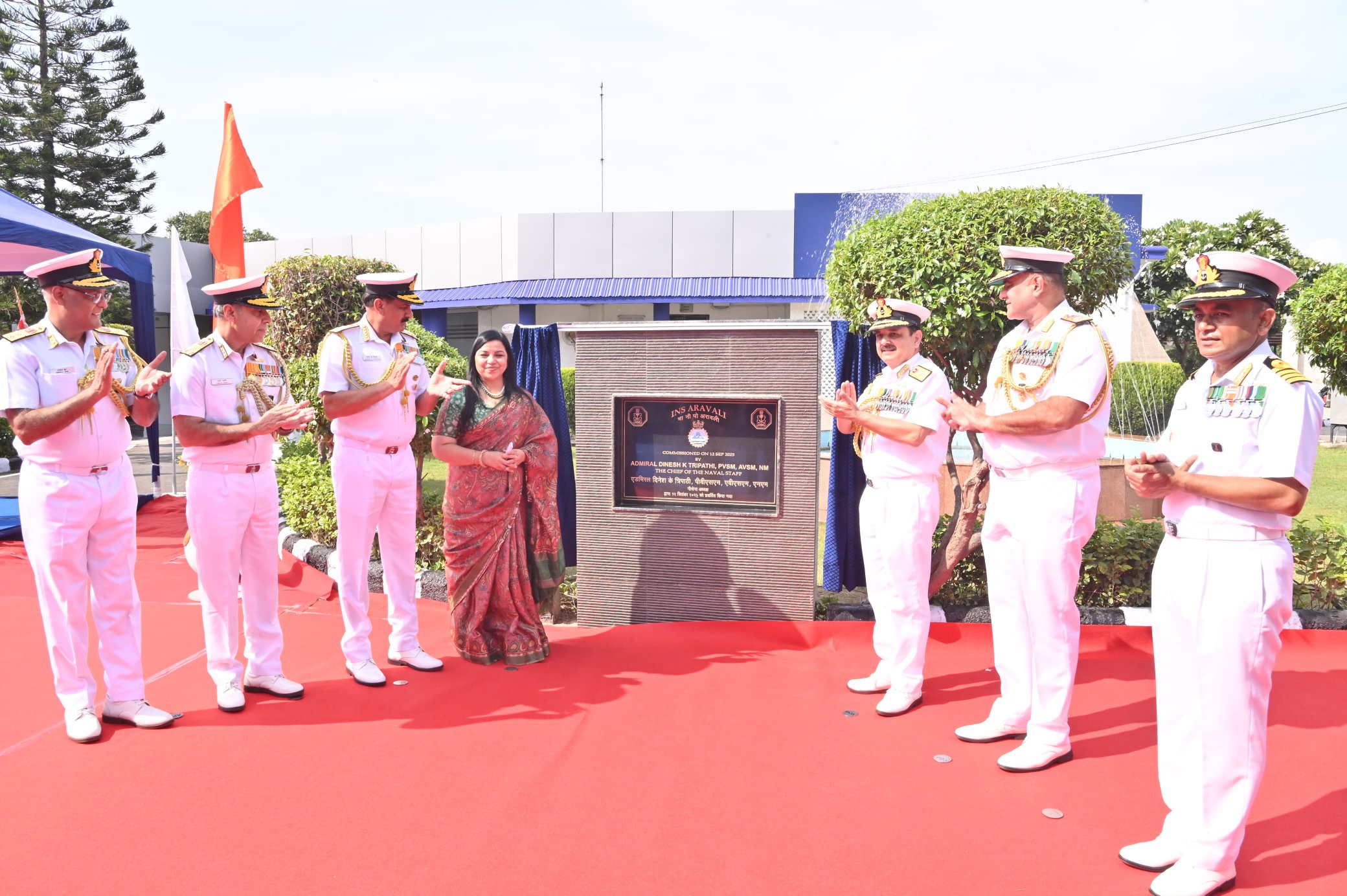
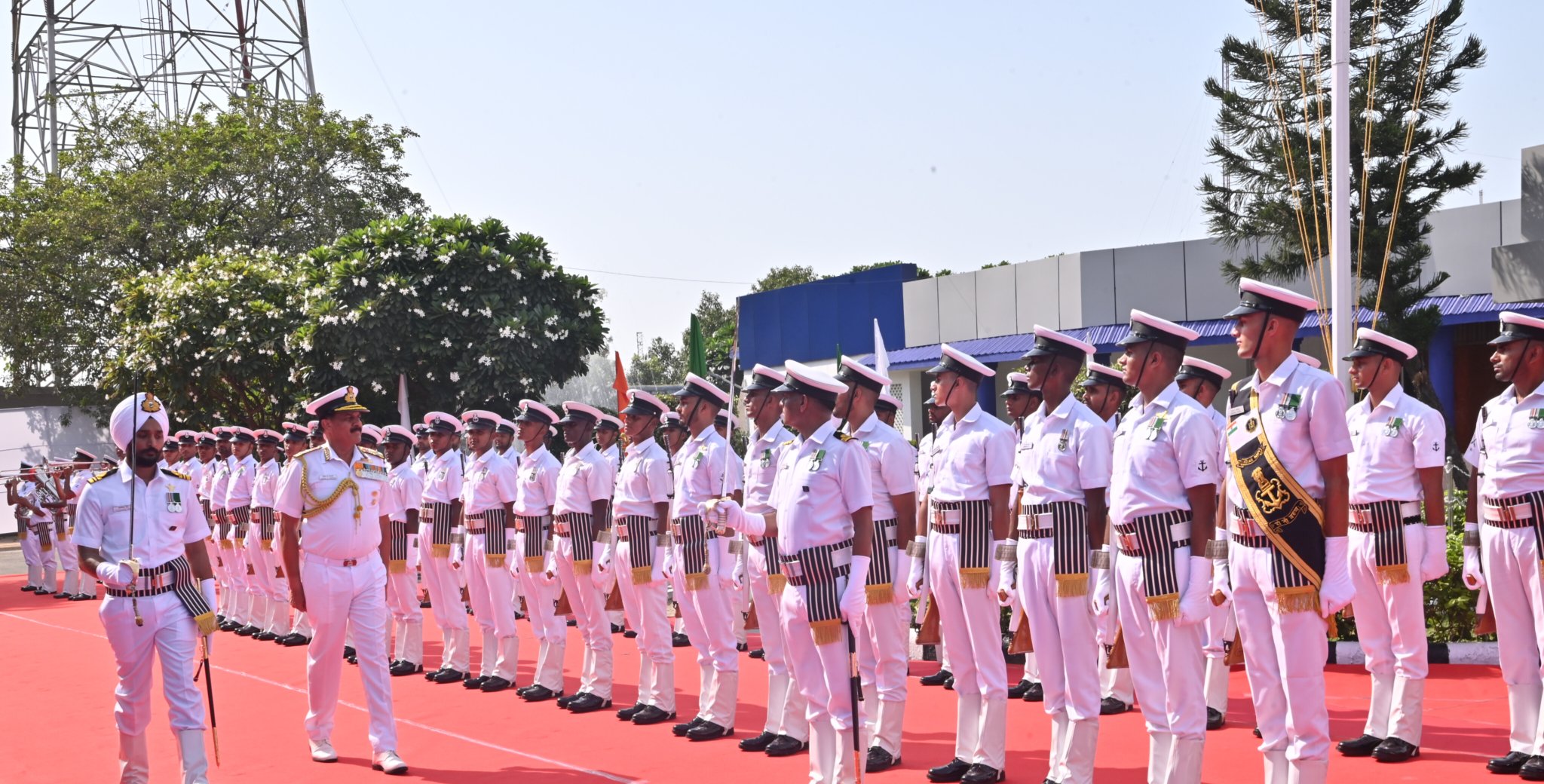
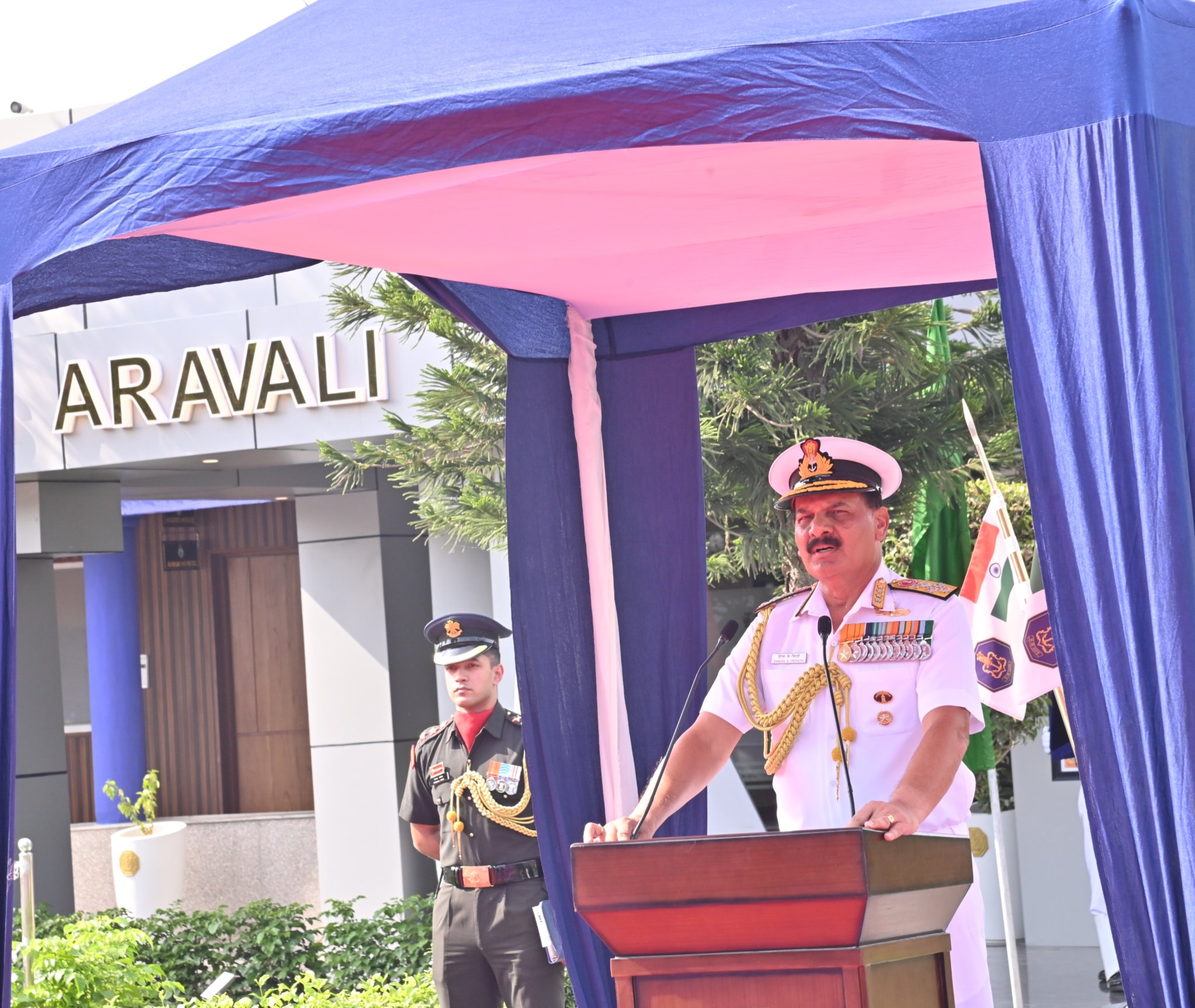
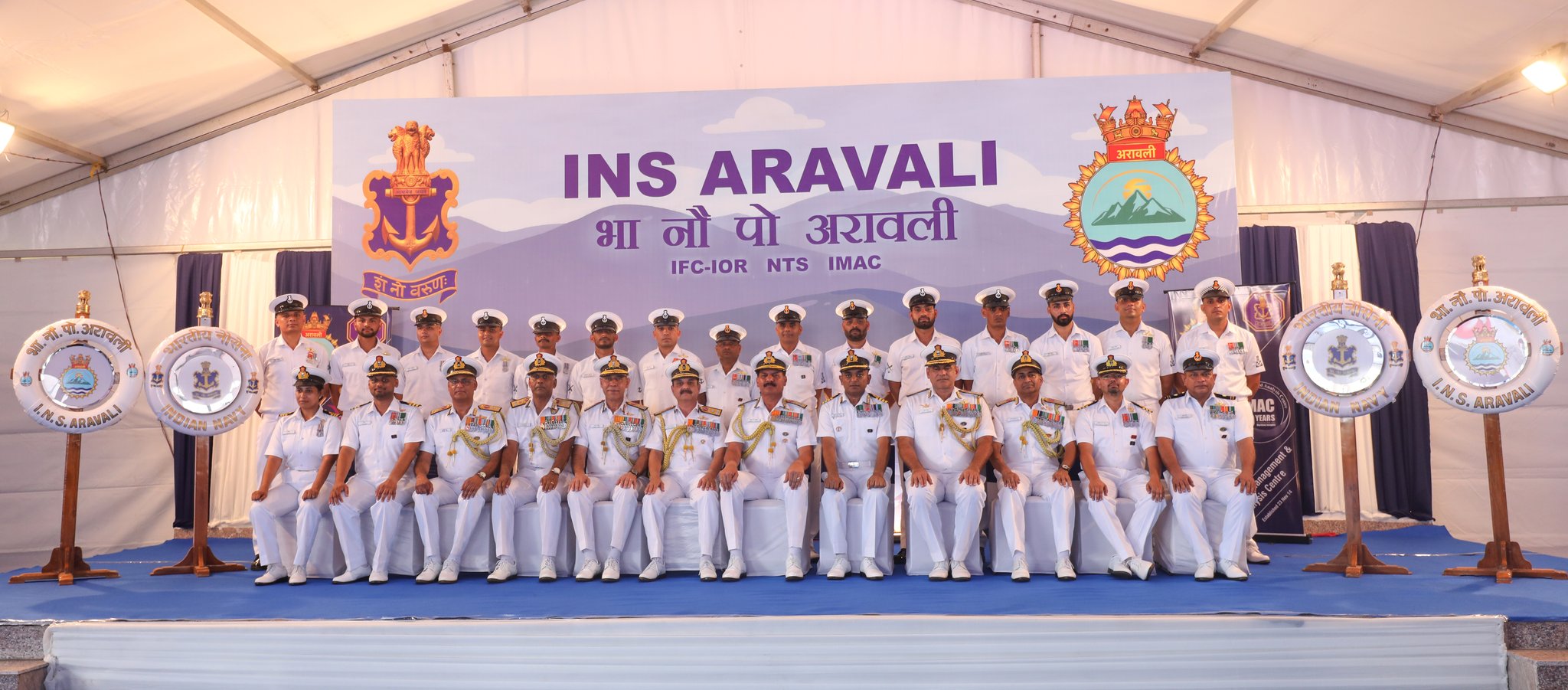




Re: Indian Navy News & Discussion - 12 April 2021
Singapore: India Navy Flexes At 'Pacific Reach' With INS Nistar Amid US, China's Dominance Clash?
Indian Navy's INS Nistar reached Singapore for the multinational submarine rescue exercise Pacific Reach 2025. This comes amid constant fight for dominance in the region. Watch what it means for the Indian Navy.
Indian Navy Welcomes INS Androth: A Gamechanger for Maritime Security Of Atmanirbhar Bharat
India’s maritime security leaps forward with the Indian Navy’s induction of ‘Androth’—the second Anti-Submarine Warfare Shallow Water Craft (ASW SWC) from Garden Reach Shipbuilders and Engineers (GRSE), Kolkata. Delivered on 13 September 2025, this state-of-the-art warship symbolizes India’s commitment to self-reliance under the ‘Aatmanirbhar Bharat’ initiative, boasting over 80% indigenous content. At approximately 77 meters, Androth is the largest Indian naval vessel powered by a diesel engine-waterjet propulsion system, equipped with cutting-edge lightweight torpedoes, indigenous ASW rockets, and advanced shallow water SONAR technology. These features make it a formidable asset for anti-submarine warfare, coastal surveillance, and mine-laying operations in crucial littoral zones.
‘Androth’ also carries immense strategic symbolism, named after the Androth Island in the Lakshadweep archipelago, reaffirming India’s focus on safeguarding its vast maritime domain amid growing regional security challenges. This delivery marks a milestone in India’s naval shipbuilding journey and underscores the country’s growing defence manufacturing capabilities while reducing dependency on foreign imports. With this powerful addition, the Indian Navy strengthens its preparedness to detect and neutralize underwater threats, thereby reinforcing its position as a dominant maritime force in the Indian Ocean Region. Stay tuned to witness India’s leap to defence self-reliance and enhanced operational readiness like never before.
Indian Navy's INS Nistar reached Singapore for the multinational submarine rescue exercise Pacific Reach 2025. This comes amid constant fight for dominance in the region. Watch what it means for the Indian Navy.
Indian Navy Welcomes INS Androth: A Gamechanger for Maritime Security Of Atmanirbhar Bharat
India’s maritime security leaps forward with the Indian Navy’s induction of ‘Androth’—the second Anti-Submarine Warfare Shallow Water Craft (ASW SWC) from Garden Reach Shipbuilders and Engineers (GRSE), Kolkata. Delivered on 13 September 2025, this state-of-the-art warship symbolizes India’s commitment to self-reliance under the ‘Aatmanirbhar Bharat’ initiative, boasting over 80% indigenous content. At approximately 77 meters, Androth is the largest Indian naval vessel powered by a diesel engine-waterjet propulsion system, equipped with cutting-edge lightweight torpedoes, indigenous ASW rockets, and advanced shallow water SONAR technology. These features make it a formidable asset for anti-submarine warfare, coastal surveillance, and mine-laying operations in crucial littoral zones.
‘Androth’ also carries immense strategic symbolism, named after the Androth Island in the Lakshadweep archipelago, reaffirming India’s focus on safeguarding its vast maritime domain amid growing regional security challenges. This delivery marks a milestone in India’s naval shipbuilding journey and underscores the country’s growing defence manufacturing capabilities while reducing dependency on foreign imports. With this powerful addition, the Indian Navy strengthens its preparedness to detect and neutralize underwater threats, thereby reinforcing its position as a dominant maritime force in the Indian Ocean Region. Stay tuned to witness India’s leap to defence self-reliance and enhanced operational readiness like never before.
Re: Indian Navy News & Discussion - 12 April 2021
https://x.com/OfficialGRSE/status/1966783567620718838 ---> GRSE Adds Greater Punch To Navy’s Shallow Water Anti-Submarine Capability, Delivers Second ASW SWC With Indigenous Naval Surface Gun.
Garden Reach Shipbuilders and Engineers (GRSE) Ltd added yet another feather in its cap by delivering INS Androth, second in a series of eight Anti-Submarine Warfare Shallow Water Crafts (ASW SWCs) being built by the shipyard for the Navy, on Saturday, September 13, 2025. This delivery comes just four months after the first warship of this series – INS Arnala – was delivered on May 8, 2025 and this was commissioned into the Navy on June 18, 2025. INS Androth was accepted on behalf of Indian Navy by Rear Admiral Ravnish Seth, CSO (Tech), ENC. Named after the Androth Island in the Lakshadweep Archipelago, this warship is also the second warship of this class on which an indigenous 30mm Naval Surface Gun (NSG), manufactured by GRSE, has been fitted. The Indian Navy had placed an order for 16 Advanced Anti-Submarine Warfare Shallow Water Crafts (ASWSWCs), eight (08) each to be built by GRSE and another Indian shipyard. GRSE has already delivered two out of these eight vessels. This milestone highlights GRSE’s consistent record of reliability, focus on indigenisation, and unwavering commitment to strengthening India’s maritime security.
ASW SWCs have nearly 88% indigenous content, displaying GRSE’s commitment towards Government of India’s Atmanirbharta and ‘Make in India’ vision. The ships are capable of full-scale sub-surface surveillance of coastal waters as well as Search and Attack. They can also carry out coordinated anti-submarine operations with aircraft. These ships have Combat Management Systems on board and will be armed with lightweight torpedoes as well as anti-submarine warfare rockets. These ships will have a complement of 57 personnel, including seven officers. With three water jets (fitted to marine diesel engines), INS Androth is extremely agile and maneuverable. A great advantage is that she only requires a draught of 2.7-metres, allowing her to access the coasts easily in search of sub-surface threats. GRSE is currently building 13 more warships, including two P17A advanced stealth frigates, six ASW SWCs, a Survey Vessel (Large) and four Next Generation Offshore Patrol Vessels. Apart from this, the shipyard is building 26 other vessels, nine of which are export platforms. GRSE is also expecting conclusion of a prestigious contract to build 05 New Generation Corvettes in this financial year.
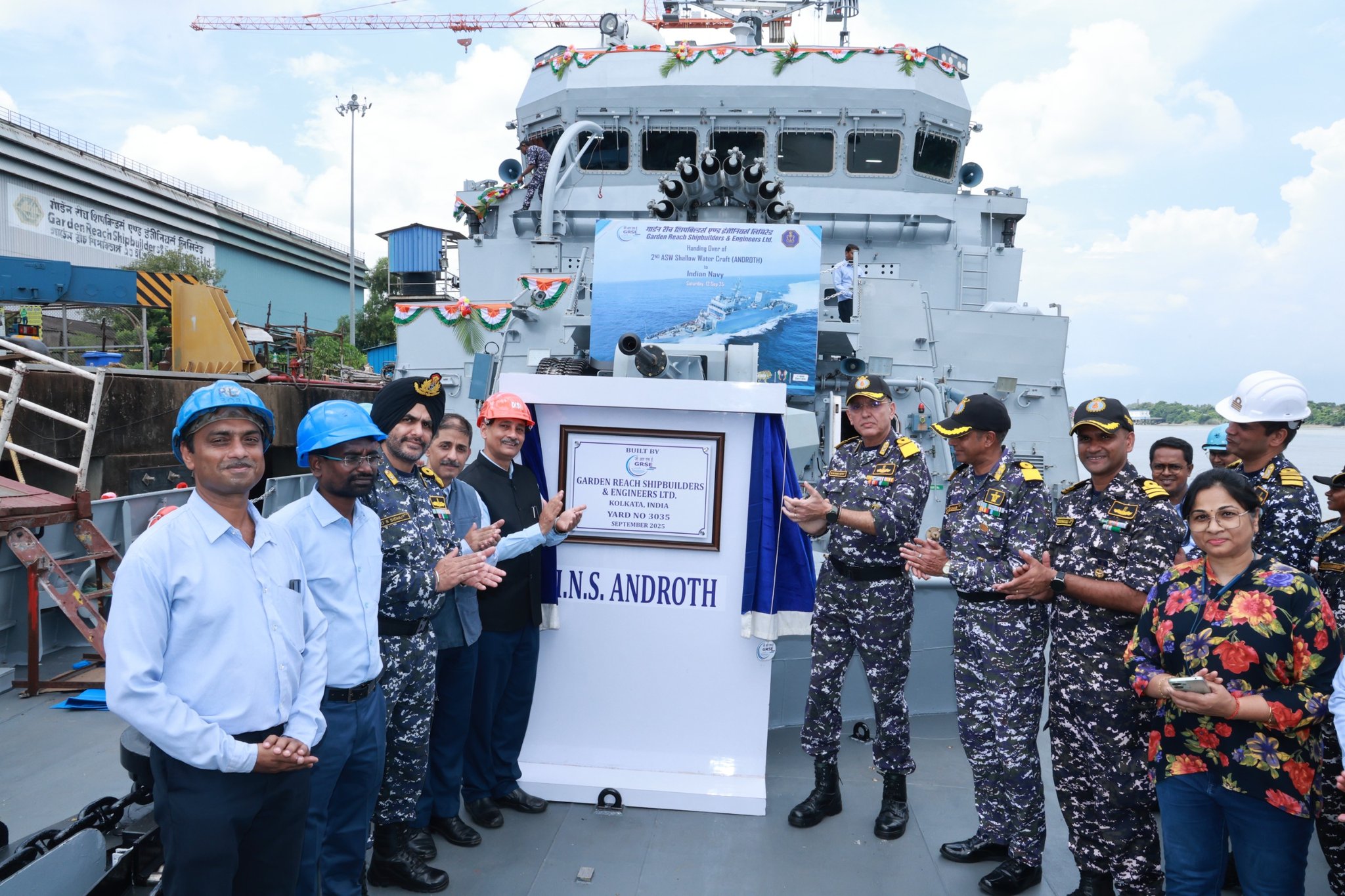
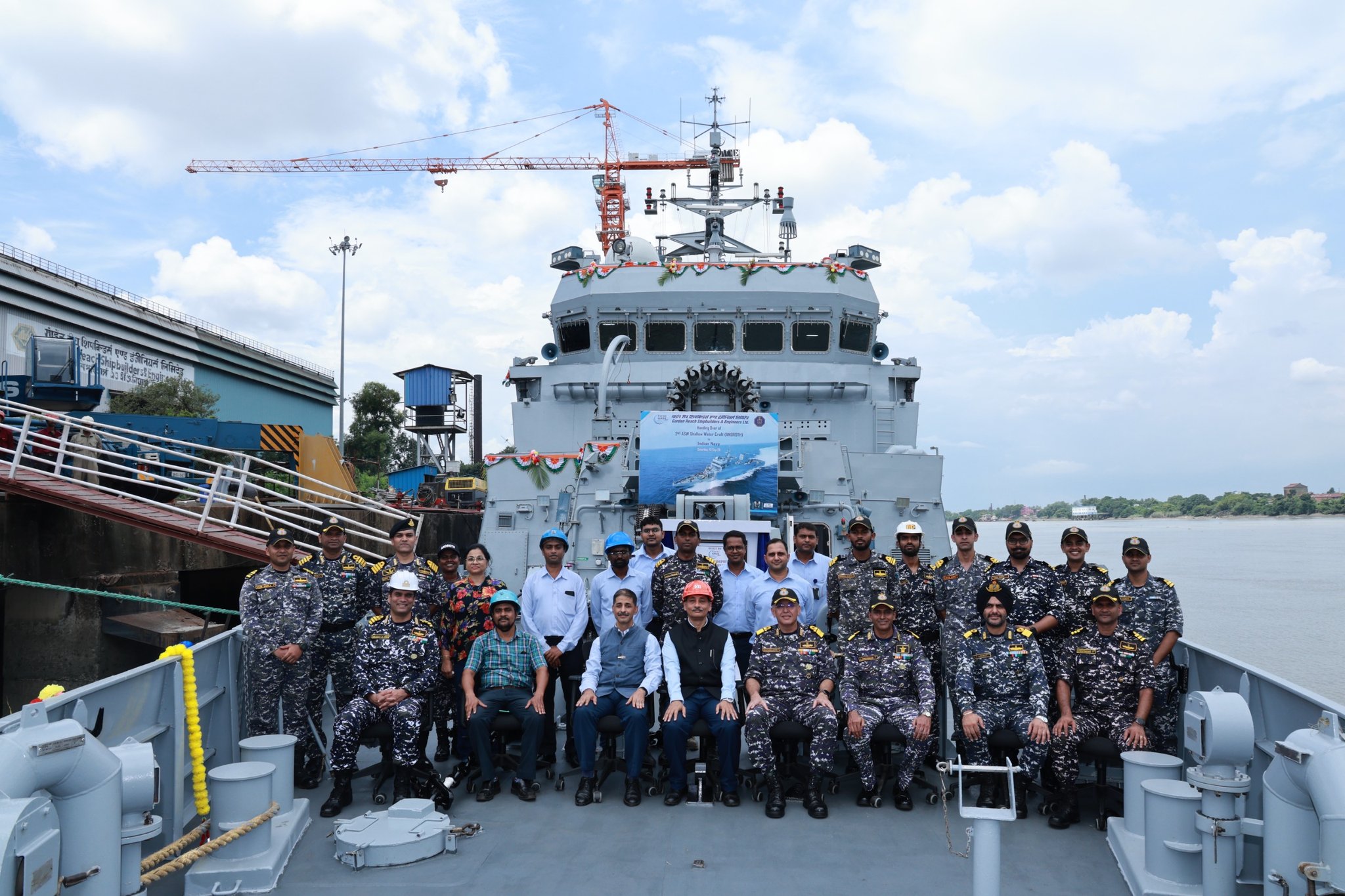
https://x.com/XClassHero/status/1966930534313201910 ---> Most silent ship in the Indian Navy, INS Androth is the 'reincarnation' of a Soviet Petya Class vessel decommissioned in 1999. Vessel takes its name from Androth Island in Lakshadweep & Minicoy, India.
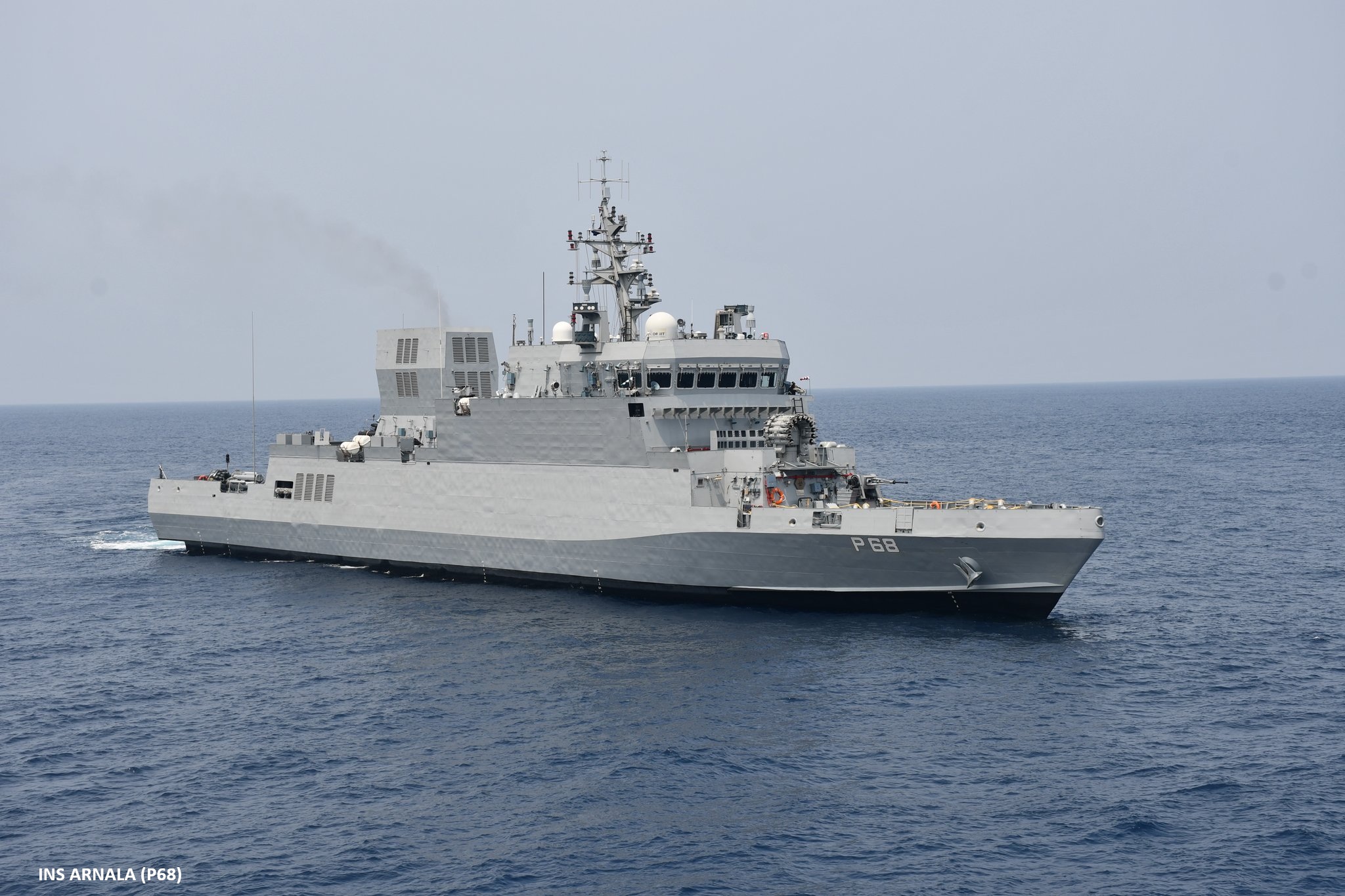
Garden Reach Shipbuilders and Engineers (GRSE) Ltd added yet another feather in its cap by delivering INS Androth, second in a series of eight Anti-Submarine Warfare Shallow Water Crafts (ASW SWCs) being built by the shipyard for the Navy, on Saturday, September 13, 2025. This delivery comes just four months after the first warship of this series – INS Arnala – was delivered on May 8, 2025 and this was commissioned into the Navy on June 18, 2025. INS Androth was accepted on behalf of Indian Navy by Rear Admiral Ravnish Seth, CSO (Tech), ENC. Named after the Androth Island in the Lakshadweep Archipelago, this warship is also the second warship of this class on which an indigenous 30mm Naval Surface Gun (NSG), manufactured by GRSE, has been fitted. The Indian Navy had placed an order for 16 Advanced Anti-Submarine Warfare Shallow Water Crafts (ASWSWCs), eight (08) each to be built by GRSE and another Indian shipyard. GRSE has already delivered two out of these eight vessels. This milestone highlights GRSE’s consistent record of reliability, focus on indigenisation, and unwavering commitment to strengthening India’s maritime security.
ASW SWCs have nearly 88% indigenous content, displaying GRSE’s commitment towards Government of India’s Atmanirbharta and ‘Make in India’ vision. The ships are capable of full-scale sub-surface surveillance of coastal waters as well as Search and Attack. They can also carry out coordinated anti-submarine operations with aircraft. These ships have Combat Management Systems on board and will be armed with lightweight torpedoes as well as anti-submarine warfare rockets. These ships will have a complement of 57 personnel, including seven officers. With three water jets (fitted to marine diesel engines), INS Androth is extremely agile and maneuverable. A great advantage is that she only requires a draught of 2.7-metres, allowing her to access the coasts easily in search of sub-surface threats. GRSE is currently building 13 more warships, including two P17A advanced stealth frigates, six ASW SWCs, a Survey Vessel (Large) and four Next Generation Offshore Patrol Vessels. Apart from this, the shipyard is building 26 other vessels, nine of which are export platforms. GRSE is also expecting conclusion of a prestigious contract to build 05 New Generation Corvettes in this financial year.


https://x.com/XClassHero/status/1966930534313201910 ---> Most silent ship in the Indian Navy, INS Androth is the 'reincarnation' of a Soviet Petya Class vessel decommissioned in 1999. Vessel takes its name from Androth Island in Lakshadweep & Minicoy, India.

Re: Indian Navy News & Discussion - 12 April 2021
Indian Navy Chief’s Colombo Visit Signals Push for Stronger Indian Ocean Security Ties
https://bharatshakti.in/indian-navy-chi ... rity-ties/
22 Sept 2025
https://bharatshakti.in/indian-navy-chi ... rity-ties/
22 Sept 2025
Re: Indian Navy News & Discussion - 12 April 2021
https://x.com/IndianSinghh/status/1972017828875456619
@IndianSinghh
Pakistan has made a deal with Somalia to attack Indian vessels in the Arabian sea.
You can expect increase in number of attacks by Somalian Pirates on Indian ships.
MARCOS gonna have good time in the Arabian sea.
China+US with the help of Pakistan wants to attack India's trade.
@IndianSinghh
Pakistan has made a deal with Somalia to attack Indian vessels in the Arabian sea.
You can expect increase in number of attacks by Somalian Pirates on Indian ships.
MARCOS gonna have good time in the Arabian sea.
China+US with the help of Pakistan wants to attack India's trade.
Re: Indian Navy News & Discussion - 12 April 2021
uddu wrote: ↑28 Sep 2025 20:03 https://x.com/IndianSinghh/status/1972017828875456619
@IndianSinghh
Pakistan has made a deal with Somalia to attack Indian vessels in the Arabian sea.
You can expect increase in number of attacks by Somalian Pirates on Indian ships.
MARCOS gonna have good time in the Arabian sea.
China+US with the help of Pakistan wants to attack India's trade.
Well , just do what the US does to "pirates" .. dont take them alive
Re: Indian Navy News & Discussion - 12 April 2021
Going after pirates will happpen. But what about the ones who created this situation?drnayar wrote: ↑28 Sep 2025 22:16uddu wrote: ↑28 Sep 2025 20:03 https://x.com/IndianSinghh/status/1972017828875456619
@IndianSinghh
Pakistan has made a deal with Somalia to attack Indian vessels in the Arabian sea.
You can expect increase in number of attacks by Somalian Pirates on Indian ships.
MARCOS gonna have good time in the Arabian sea.
China+US with the help of Pakistan wants to attack India's trade.
Well , just do what the US does to "pirates" .. dont take them alive
Re: Indian Navy News & Discussion - 12 April 2021
It will be a good target practice for the IN & will also increase its operational sphere in the Arabian Sea.
As far as the handlers of these pirates go, these are non-ideological entities, up for sale for the highest bidder. If the Indian establishment decides to pay them for counter attacks, it's a possibility but i highly doubt it will happen.
Re: Indian Navy News & Discussion - 12 April 2021
India-Japan Defence Deal the Counter to China's Influence In Asia? Maj Gen GD Bakshi Explains
India is reviving the deal with Japan for ShinMaywa US-2 amphibious aircraft
India is reviving the deal with Japan for ShinMaywa US-2 amphibious aircraft
-
MeshaVishwas
- BRFite
- Posts: 916
- Joined: 16 Feb 2019 17:20
Re: Indian Navy News & Discussion - 12 April 2021
INS Nistar at XPR2025
The visuals are very impressive, definitely one of the most capable MoSHIPs in service.
The visuals are very impressive, definitely one of the most capable MoSHIPs in service.
Re: Indian Navy News & Discussion - 12 April 2021
Is Navy considering Shinmaywa in ASW role or only for SAR!!
Shinmaywa and Harbin have similar Range and Max takeoff weight
Coast Guard may need for extended coverage of the islands.
In Navy, SAR and ASW how beneficial is it.
Are we going to order more Posiedons or not.
Or will these be for Long range and Shinmaywa fill in the intermidiate range.
Shinmaywa and Harbin have similar Range and Max takeoff weight
Coast Guard may need for extended coverage of the islands.
In Navy, SAR and ASW how beneficial is it.
Are we going to order more Posiedons or not.
Or will these be for Long range and Shinmaywa fill in the intermidiate range.
Re: Indian Navy News & Discussion - 12 April 2021
If Shinmaywa deal can happen, that would be the best. There are many uses cases for these.
The last I heard several years back from a top Japanese guy who visited our think tank was that Shinmaywa was not a very big company and it was neither possible for them to cut the costs much nor do ToT which India insisted upon.
But, if these two are sorted out, as Gen Bakshi seems to confirm, then there is nothing like that.
The last I heard several years back from a top Japanese guy who visited our think tank was that Shinmaywa was not a very big company and it was neither possible for them to cut the costs much nor do ToT which India insisted upon.
But, if these two are sorted out, as Gen Bakshi seems to confirm, then there is nothing like that.
Re: Indian Navy News & Discussion - 12 April 2021
I seem to remember that Philip sir was a strong proponent of the flying boats. He was partial to the Russian Beriev IIRC
The Japanese Shinmaywa though costly was much more capable than the Russian offering. Especially for the sea states in the Indian Ocean
The Japanese Shinmaywa though costly was much more capable than the Russian offering. Especially for the sea states in the Indian Ocean
Re: Indian Navy News & Discussion - 12 April 2021
Nice programme
9 Days On INS Saryu; A Sailor's Life At Sea, A Home Away From Home | Andaman & Nicobar Command
What is life like for sailors on board an Indian Naval Ship in the Andaman and Nicobar Command's (ANC) Area of Responsibility (AoR)? Well, we sailed for nine days on INS Saryu to find out. Watch an extraordinary journey aboard one of the Navy's offshore patrol vessels. In the 'Arc Of Power', Episode VI, we continue to showcase the strategic importance of the ANC in safeguarding India's maritime interests.
INS Saryu: Indigenous Nature & Role
INS Saryu represents, among other things, India's indigenous naval shipbuilding, design and construction. We also witness firing of the ship's arsenal at sea. The documentary captures the maritime ballet of seamanship that positions the vessel for strategic operations across the oceans. We also capture the sailors who utilise the multi-role platform in anti-piracy operations, fleet support, and naval gunfire support during amphibious assaults.
Saryu's Sailors At Sea
The documentary captures the human element of naval operations on the "Most Spirited Ship" of 2024. The ship's galley operations, recreational activities on the helo deck, and the camaraderie among crew members from across India provide compelling human interest content. The wardroom dining scenes and bada khaana (open night) showcase naval traditions. And not to forget, we capture rare footage of Barren Island, India's only active volcano.
9 Days On INS Saryu; A Sailor's Life At Sea, A Home Away From Home | Andaman & Nicobar Command
What is life like for sailors on board an Indian Naval Ship in the Andaman and Nicobar Command's (ANC) Area of Responsibility (AoR)? Well, we sailed for nine days on INS Saryu to find out. Watch an extraordinary journey aboard one of the Navy's offshore patrol vessels. In the 'Arc Of Power', Episode VI, we continue to showcase the strategic importance of the ANC in safeguarding India's maritime interests.
INS Saryu: Indigenous Nature & Role
INS Saryu represents, among other things, India's indigenous naval shipbuilding, design and construction. We also witness firing of the ship's arsenal at sea. The documentary captures the maritime ballet of seamanship that positions the vessel for strategic operations across the oceans. We also capture the sailors who utilise the multi-role platform in anti-piracy operations, fleet support, and naval gunfire support during amphibious assaults.
Saryu's Sailors At Sea
The documentary captures the human element of naval operations on the "Most Spirited Ship" of 2024. The ship's galley operations, recreational activities on the helo deck, and the camaraderie among crew members from across India provide compelling human interest content. The wardroom dining scenes and bada khaana (open night) showcase naval traditions. And not to forget, we capture rare footage of Barren Island, India's only active volcano.
Re: Indian Navy News & Discussion - 12 April 2021
India’s Aatmanirbhar Rise at Sea: Androth to Redefine Ocean Power Balance
India’s Aatmanirbhar Rise at Sea: Androth to Redefine Ocean Power Balance
It is a moment of immense pride for India! As the Indian Navy prepares to commission its second state-of-the-art anti-submarine warfare shallow water craft, Androth, on October 6, 2025, at Visakhapatnam, the nation is taking a bold leap forward in asserting its maritime dominance. With over 80% indigenous components, Androth embodies Prime Minister Modi’s vision of Aatmanirbhar Bharat and signals India’s growing might as the preeminent blue water navy in the Indian Ocean region. From safeguarding our 11,098 km coastline to leading as the net security provider, this commissioning marks a pivotal step toward India’s ambitious goal of a 200-strong naval fleet by 2035. Here’s a closer look at how Androth is steering India’s maritime power to new horizons.
India’s Aatmanirbhar Rise at Sea: Androth to Redefine Ocean Power Balance
It is a moment of immense pride for India! As the Indian Navy prepares to commission its second state-of-the-art anti-submarine warfare shallow water craft, Androth, on October 6, 2025, at Visakhapatnam, the nation is taking a bold leap forward in asserting its maritime dominance. With over 80% indigenous components, Androth embodies Prime Minister Modi’s vision of Aatmanirbhar Bharat and signals India’s growing might as the preeminent blue water navy in the Indian Ocean region. From safeguarding our 11,098 km coastline to leading as the net security provider, this commissioning marks a pivotal step toward India’s ambitious goal of a 200-strong naval fleet by 2035. Here’s a closer look at how Androth is steering India’s maritime power to new horizons.